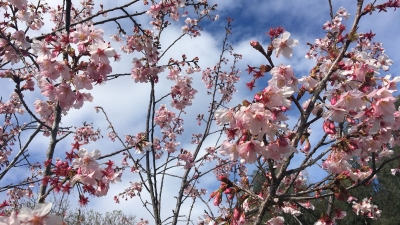
The Japanese eagerly await the cherry blossom season every spring. The seasonal spectacle of white and pink flowers bursting across cities also draws thousands of tourists to the country. Crowds flock to popular locations to take photos and have picnics underneath the branches.
The cherry blossom season is extremely important for Japan, both economically and culturally. The flowers experience a peak bloom that only lasts a few days and it signifies the Japanese concept of mono no aware, the wistful realisation that nothing lasts forever. The season has been revered, and the time of peak bloom has been predicted and tracked for more than a thousand years. Imperial court documents and ancient diary entries on the nation’s cherry blossom festivals can be traced back to 812 AD.
Today, these flowers also carry the warning signs of climate change. In 2021, after an unusually warm spring, the city of Kyoto witnessed peak bloom on March 26, the earliest in more than 1,200 years. The earliest blooming date so far had been March 27 in the year 1409. Scientists warn that it’s a symptom of the larger climate crisis threatening ecosystems everywhere.
CHERRY-PICKED FACTS FOR YOU
- The Japanese cherry generally refers to ornamental cherry trees. There are over 300 different varieties of cherry trees also known as cultivars. Taking advantage of the mutable traits of cherry trees, many cultivars have been created for cherry blossom viewing, especially in Japan.
- Eighty % of cherry trees in Japan are the popular Somei Yoshino variety.
- Most flowers are shades of white or pink, but some trees bear yellow and green flowers.
- Cherry blossom species naturally have five petals, but there are some cultivars that have more than 100 petals per flower. Many cherry flowers and leaves are used as food ingredients in Japan.
- Sakura is the Japanese word for cherry blossom and is the country’s most popular girls name.
- Cherry blossom-viewing celebrations date back to the 9th Century when Japanese emperors held viewing parties with their courts. According to folklore, the mountain deity travelled to rice paddies on floating cherry blossom petals and nurtured the crops.
CHANGING WITH THE CLIMATE
- Studying data from the past years, scientists have mapped out a clear trend in the timing of cherry blossom peak, and it changes with changes in climate. Scientists find that as spring arrives earlier in the Northern Hemisphere due to global warming, cherry trees are also shifting their patterns of activity.
- Since the 1830s, data show, the Japanese mountain cherry tree has been flowering earlier and earlier.
- While cherry blossoms in Kyoto may start to flower in March, their full bloom date lay historically around April 17. But in the past century this date has advanced to April 5,
- It is not just Kyoto, other places in Japan are also experiencing changes in flowering pattern. This year, in Tokyo, the cherry blossom season arrived 12 days earlier than historical records. In Hiroshima, the season began on March 11, eight days earlier than in 2004. (Even) cherry trees in Washington DC, the US, have begun to flower earlier after unseasonably warm springs. In 2020, the blooms arrived roughly two weeks ahead of the long-term average of April 3).
- Scientists predict that if the temperature rises by 2.5 °C, cherry blossoms will have already dropped in the mountainous city of Takayama by March-April.
- While early blooms are caused by warm springs, delayed blooms could result from warming winters, say experts. Southern Japan is already seeing delayed blooms.
Why does this matter?
Plants and animals changing their patterns in response to climate change can put entire ecosystems out of sync. The vital interactions between species will be affected. Pollination, food source, and reproduction will go for a toss. Farmers who depend on the plants, their flowers, and fruits will also be affected.
CHERRY BLOSSOM IN WASHINGTON
In 1912, Japan gifted more than 3,000 cherry blossom trees to the United States as a gesture of friendship and political alliance between the two countries. They were planted along the Tidal Basin in Washington D.C., which now shares the yearly blossom-viewing tradition.
Picture Credit : Google



